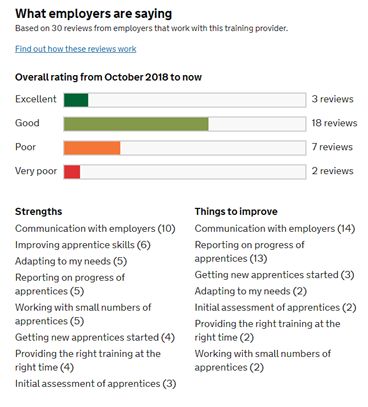
Long-term is better for your bottom line.
Ask any strategic marketeer about customer acquisition vs customer retention and they will tell you that it costs five times as much to attract a new customer than it does to retain an existing one. Yet only 18% of companies have a greater focus on retention than acquisition. This is not a good use of time or money.
Unfortunately, the apprenticeship industry is no exception. If we want to increase the number of apprenticeships being delivered long-term, business development teams need more support and time to focus on customer satisfaction and less on outright sales.
So how can we do it? Here are five tips to get you started…
-
It starts with your apprenticeship curriculum
If you are designing a curriculum that needs to be applicable for multiple employers, get your business development team involved in curriculum development. They know the things employers ask for and can explain some of the needs and frustrations employers have with apprenticeships.
The flexibility of apprenticeship standards gives you an opportunity to package the curriculum in a way that suits your target audience. Business development colleagues will be able to talk to employers about it with more confidence too.
Just asking your employer-facing teams basic questions can help; like why would an employer want this programme? What particular knowledge, skills and behaviours will they want it to focus on? What methods of delivery will work best around their business, and crucially, what business problems do they need the training to solve? e.g. staff retention, addressing particular skills gaps, technological changes in their business, etc.
-
Set expectations early in the relationship
For business development staff, it can sometimes be tempting to over-promise in order to seal the deal with employers. If expectations aren’t set at the beginning of a relationship, employers can feel like the provider is under-delivering further down the line.
Try and be as clear as possible at set-up about what is expected of employers during the apprenticeship and what your training programme can and cannot deliver for them. Yes, you will lose some employers who think your programme is too much commitment, but they would have found out once the programme had started anyway and be unhappy with the experience.
It is much better to set out your stall from the off, with a clear rationale for working with you. This will attract employers that buy into your organisation, not just the programme, and allow you to build long-term relationships.
-
Focus on achievements, not starts
Hitting targets for starts can be misleading as ‘lots of starts’ does not necessarily equate to more income. If the wrong apprentices are put on the wrong programmes with the wrong employers, then they are more likely to drop off the apprenticeship.
The focus – for business development teams and front-line trainers – has to be on getting the right people into post and giving them (and the employer) the support they need in the first six weeks, so they are more likely to last the programme and achieve.
There’s also a wider reputational point. If you focus solely on starts, achievement and satisfaction rates can be affected too. These are published on the apprenticeship service portal for other businesses to see. Ultimately, refocussing on achievement and satisfaction rates will help to contribute to longer-term growth.

-
Report on apprentice progress regularly
Throughout the apprenticeship journey, make sure you are contacting the employer to understand, from their point of view, how apprentices are progressing ‘on-the-job’ and keep them up to speed with how each apprentice is performing ‘off-the-job’.
For example, it can be tempting to hide the fact that a learner is not getting through their off-the-job training at the pace expected. However, not being open and honest about when apprentices are falling behind can damage the relationship with the employer in the long run.
Getting towards end-point assessment and finding out that apprentices suddenly need significant additional time off-the-job is much harder to manage for a business, than nipping it in the bud earlier in the programme.
-
Added value
Alongside your apprenticeship programme, think about additional added value you can offer the employers you work with to cement the relationships you are building.
An obvious one is to offer AEB funded training to other staff that they employ, but there are other things that you might consider like letting them use your premises for business meetings, organising networking groups or throwing an end of year apprenticeship celebration to thank them for their hard work supporting apprentices develop through training.
The goal is to deliver a customer-orientated service where employers trust you as a partner to their business, work with you time and again and advocate your service to other businesses in their network.
Apprenticeships Now and in the 2020s – AoC online conference
On 16-17 March 2021, the Association of Colleges and SDN are hosting an online conference to help you consider what this all means for you and your organisation. With sessions for leaders and practitioners, the focus is on apprenticeships now and in the 2020s – we’ll take a look at how you can build strong long-term relationships with employers, curriculum design, the skills needed by those delivering great apprenticeship provision and the technology that can help to underpin this.
The conference is open to all apprenticeship providers.
Find out more and book here: https://www.aoc-services.co.uk/events_and_training/app2020s/
